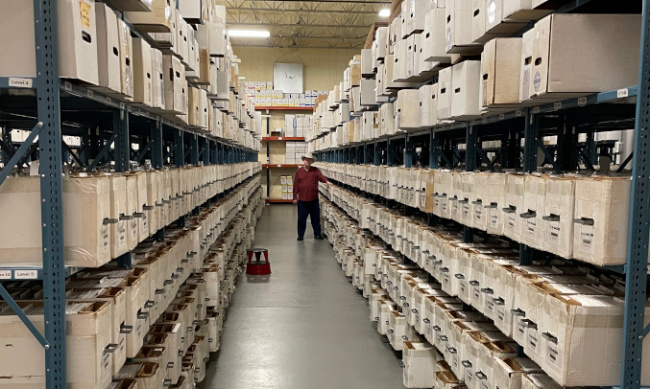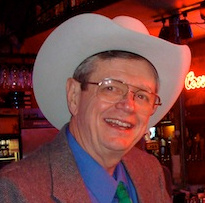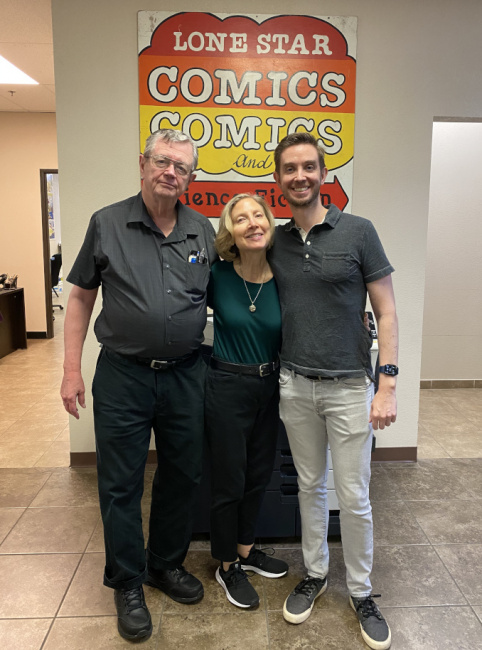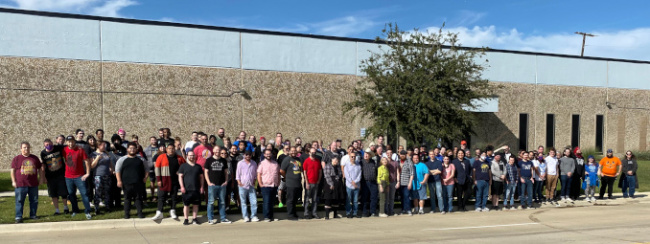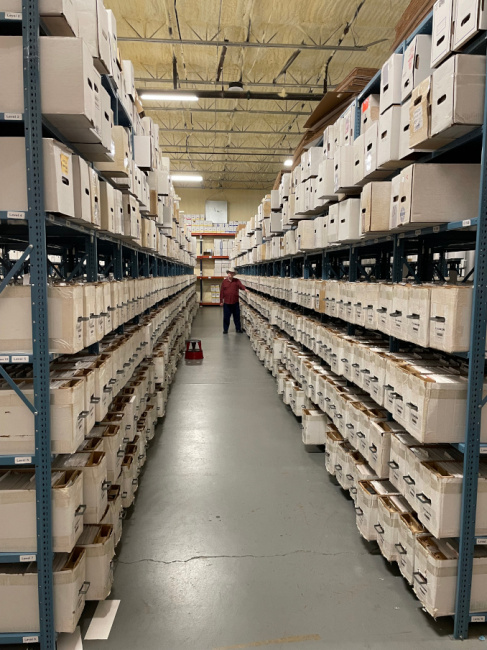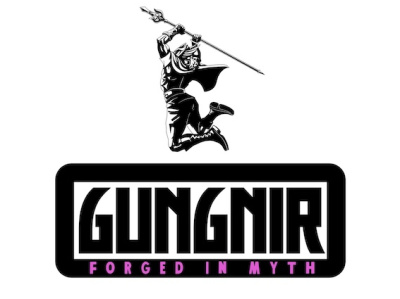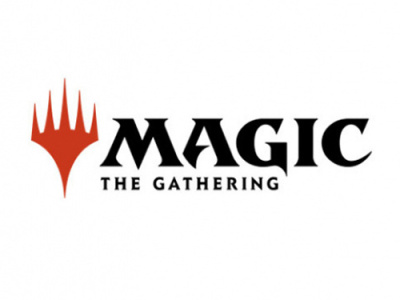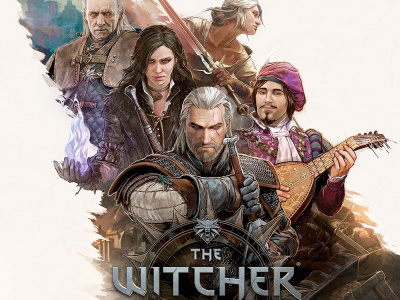"I was really a skinny kid," he said.
He used lunch money, an allowance and proceeds from a paper route to build a gigantic collection of comics. Science fiction titles were his favorites, like DC’s Mystery in Space and Strange Adventures. By 1961, when he was 14, he began to sell some of his inventory through mail order in early fanzines.
Saunders made his name in mail order, expanded in the 1970s to physical stores in the Dallas-Fort Worth area under the name Lone Star Comics, and in the 2010s sold his stores to focus on his company’s thriving website, MyComicShop.com. Today, the site is one of the largest sellers of new and back issue comics in the world.
Saunders, 76, has shown a knack for managing through change. He profited from the booms and survived the busts in a career that spans the entire modern history of comics retail. And, he expanded into e-commerce before most of his peers, realizing how the reach of a website was well-suited to meet the needs of comics buyers.
In interviews this month, speaking by phone from his small, windowless office at the MyComicShop.com warehouse in Arlington, Texas, he reflected on the evolution of his business. He gives much of the credit for recent success to his son, Conan, who is now president and a co-owner, and whose skills as a computer programmer have been essential for building the website.
But comics retail is only part of Saunders’ story. While in college in the 1960s, he wrote horror and sword and sorcery comics stories for editor Archie Goodwin at Creepy and Eerie magazines. In the 1970s, he co-wrote science fiction prose stories and a novel. He recalls that he could have focused on writing, but he let it turn into more of a hobby as his business grew.
"Comic retailing took over my life," he said.
He is well-known to comics retail insiders and to the 30,000 or so people who receive his company’s weekly newsletter.
"Buddy is simply a very smart guy with very good business sense," said Bud Plant, owner of Bud’s Art Books, and someone with his own rich history in comics retail as a store owner and a distributor.
Plant is speaking as someone who has known Saunders for decades as a fellow retailer but also as a customer. He buys comics from MyComicShop.com, and, when he is selling comics from his personal collection, he often does so on consignment through the site.
"He has good people working for him; he clearly trains them well," Plant said. "And maybe just as important, he loves what he is doing. He is a comics fan first and foremost."
Saunders Once Sold a Fantastic Four #1 for 25 Cents
Growing up mostly in Texas, first comic book he can remember buying for himself was Donald Duck #71, published in 1960, which shows the sun shining through a telescope and burning Donald’s tail. He soon was reading science fiction and superhero comics.
Saunders had a deep collection by the time Marvel began its new super hero line with titles like Fantastic Four #1 in 1961. By then he also had begun selling and trading comics through the mail, advertising in fanzines like Rocket’s Blast Comicollector. He recalls selling a near-mint condition copy of Fantastic Four #1 for 25 cents.
"I doubled my money," he said. The cover price was 10 cents. "That was good at the time."
He made friends among fellow comic readers at his school in Arlington and formed connections with peers in comics and science fiction fandom. He and two friends in Texas, Larry Herndon and Howard Keltner, began publishing a fanzine, Star-Studded Comics, in 1963.
Now in high school, Saunders wanted to be a comic book artist and his illustrations appeared in fanzines alongside the work of artists who would go on to become comics professionals, like Dave Cockrum and Jim Starlin.
"My ambition through junior high and high school was to become a comic book artist, but God blessed me with not enough talent," he said.
What he means is that, in hindsight, he knows that he wouldn’t have been happy with the life of a freelance artist, so it was fortuitous that he wasn’t good enough to seriously pursue art as a career.
He shifted to focus more on writing, including work co-written with his school classmate Howard Waldrop. The two of them were part of a small group of aspiring science fiction writers who would meet every few months to critique each other’s work. Among the other members was George R.R. Martin, now best known for A Song of Fire and Ice, the series that he helped to adapt for the television show Game of Thrones.
Saunders graduated from high school in 1965 and got a teaching degree from East Texas State University in 1970.
His plan was to teach and use the summers to write, and he got a job teaching art at a middle school near Arlington. He became a published novelist a few years later with the release of The Texas-Israeli War: 1999, co-written with Waldrop.
But he never stopped reading, buying and selling comics. His mail-order business continued and took up a spare bedroom.
During this same period, Phil Seuling and Jonni Levas in New York had started a company that would sell comics from major publishers directly to businesses like the one Saunders was operating (see "Phil Seuling: The Man Who Invented the Direct Market"). Before that, comics retailers needed to buy from a network of newspaper and magazine distributors who often had little appreciation for comics. The 1973 start of Seuling and Levas’ company, later called Sea Gate Distributors, is the beginning of the Direct Market era in which comic shops blossomed (see "Direct Market 50th Anniversary").
Saunders’ business grew so much that he felt a need to open a physical retail location, which he did in 1977. The 700-square-foot space was the first of what would be many locations of Lone Star Comics.
By this time, he was married to Judy, who didn’t initially work at the business, but would be a key part of it in later years.
He ran the store and continued to teach, but he and Judy agreed that he would leave his job as an art teacher if and when the income from the store grew to more than his teaching salary. It ended up happening sooner than they expected, within one year, and he became a full-time retailer.
Comic shops went through rapid growth in the 1980s, and in the Dallas-Fort Worth area that growth was visible through the expansion of Lone Star Comics from one small location to, at its peak, eight locations, along with a host of competing stores.
To help manage the growth, Judy left her administrative job with the federal government and joined the family business full time, managing human resources and accounting. Buddy Saunders said this was an important moment for the company’s growth because Judy was highly effective at handling the parts of the business that he wasn’t as comfortable with, and that allowed him to focus on the mix of products the stores were selling.
While some shops were purists in focusing almost exclusively on comics, Lone Star had a willingness to expand into other product areas, like role-playing games in the 1980s and Pokemon cards and Beanie Babies in the 1990s.
"I hated Beanie Babies, but they were hot at the time, so I learned as much as I could about Beanie Babies," Saunders said.
Lone Star Goes Online, and Conan Saves the Day
All along, Saunders tried to remain ahead of the curve in using technology in his stores for things like tracking inventory. So, when businesses started to get websites in the 1990s, he saw an opportunity.
The first iterations of the Lone Star website were crude, but in the late 90s, Saunders took one of the biggest risks of his career by putting aside about $200,000 to hire an outside firm to design a fully functional e-commerce site for the mail order portion of his business.
It was a disaster. While the contractors were good programmers, they didn’t understand the nuances of comics collecting, with a vast number of items and details for each item. The result was a site that Saunders felt was unusable and nowhere close to being ready to go live.
"They just were not capable of doing something as complex as what we needed," Saunders said.
His son, Conan, who was an undergraduate at MIT, offered to take a look at the site and see what he could do. At this point, Saunders has retold the story of Conan’s rescue of the website so many times that it has the feel of a tall tale, but he assures that it’s all true: In-between classes and homework in Massachusetts, Conan wrote the code to build the MyComicsShop.com website nearly from scratch.
Conan acted as a part-time software developer for the family business through college, graduate school and then years in jobs with other companies.
Then, in 2010, he came to work at MyComicShop.com full time as vice president. In 2021, after his father had a stroke, Conan became the company’s president.
Today, the company is as large as it has ever been, with about 130 employees, including about 40 people who do nothing but grade the condition of back issue comics, and five programmers who maintain the website. The company’s main challenge is keeping up with growth, said Buddy Saunders, who has recovered from his stroke and back at work.
Conan grew up in the business. He used to bag and board comics and do odd jobs at the stores as a child. He remembers that the comics he read as a child tended to be decades old because they were ones around the house.
His upbringing prepared him to run the business, both from being around the company and seeing his father in action.
"He is very organized," Conan said. "He's good at building systems and documenting things and designing things."
Conan described a place where things run smoothly and where people are expected to act with integrity.
"He's set a great example for me in my entire life," he said.
Part of that example is a sense of joy about doing the work of comics retail. When asked how long he plans to keep working, Buddy Saunders said this:
"If I retire, it’s going to be to a cemetery."
This article is being presented as part of ICv2’s Direct Market 50th Anniversary celebration; for more, see "Comics Direct Market 50th Anniversary."



